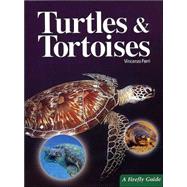
Vincenzo Ferri was a founder and director of the Herpetological Study Center in Italy. He works with major conservation organizations as well as those responsible for parks and nature reserves on problems of turtle and tortoise management and protection. He is the author of a number of books and scientific and popular articles and an advocate of animal protection programs around the world.
| Preface | 6 | (2) | |||
|
8 | (20) | |||
|
10 | (1) | |||
|
11 | (2) | |||
|
13 | (3) | |||
|
16 | (12) | |||
|
28 | (12) | |||
| Entries | |||||
|
40 | (16) | |||
|
56 | (24) | |||
|
80 | (26) | |||
|
106 | (42) | |||
|
148 | (54) | |||
|
202 | (28) | |||
|
230 | (14) | |||
| Appendices | 244 | (2) | |||
| Index | 246 | (4) | |||
| Bibliography | 250 | (2) | |||
| Glossary | 252 | (1) | |||
| Societies, websites and journals | 253 | (1) | |||
| Photographic credits | 254 |
The New copy of this book will include any supplemental materials advertised. Please check the title of the book to determine if it should include any access cards, study guides, lab manuals, CDs, etc.
The Used, Rental and eBook copies of this book are not guaranteed to include any supplemental materials. Typically, only the book itself is included. This is true even if the title states it includes any access cards, study guides, lab manuals, CDs, etc.